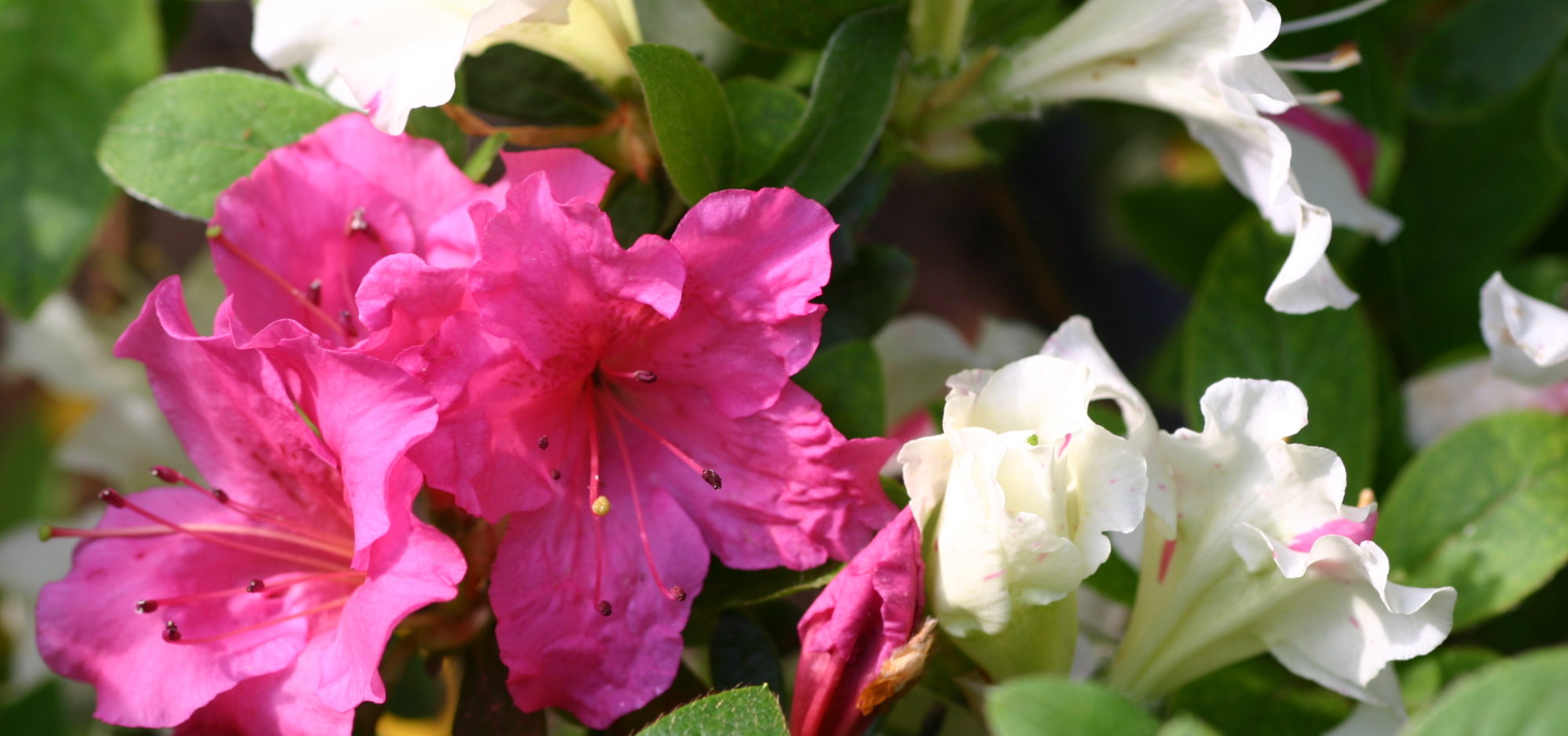Planting azaleas
Azaleas prefer loose, moist, well-drained soil for their roots. If the soil is heavy, mix it with as much as 50% organic matter, such as fine pine bark or rotted leaves, before using it to plant the azalea. When choosing such soil amendments, avoid materials which may be alkaline or “hot” (containing fresh manure), such as the “mushroom compost” sold for use with perennials.
If the plant is wilting, soak it in a tub of water for a few minutes, or water it slowly and thoroughly with a hose before planting it.
If the plant is in a container, remove it. Avoid pulling it by the stems, but instead turn the container upside down and lift it off the plant. Any visible roots wrapped around the rootball will strangle the plant when they grow, instead of growing out into the soil. With a sharp knife, cut these roots by making slits about 1/2″ deep from the top to the bottom of the rootball, about every 2″ or 3″ around the rootball. Cut any matted roots off the bottom of the rootball. While it may seem harsh, cutting or untangling the roots is very important o help them become establishedd after planting.
In good soil, dig a hole at least a few inches wider than the rootball and just as deep as the rootball, and plant the top of the rootball even with the top of the soil. Avoid disturbing the soil at the bottom of the hole. If it is disturbed or soil must be returned to the hole, tramp it firm before planting. The goal is to avoid the azalea from sinking more deeply as the soil settles. In heavy soil, plant high, with the top of the rootball several inches above the ground level, and mound the amended soil up to the rootball. In very poorly drained soil, plant on top of the soil, or in a very shallow depression.
Put the root ball into the hole, and rotate and tip the plant to its best appearance. If it was wrapped in burlap, optionally remove it. Real burlap can safely be untied and stuffed down beside the root ball, as it will rot away in a few months. You must remove plastic burlap (usually yellow or orange), as it will not rot and will impede root growth. Add soil to fill the space under and around the root ball, tamping it firmly with your fingers, and continue until the fill soil is at the same level as the top of the root ball and the surrounding soil. The goal is to avoid any airspaces without compacting it so much that water will not enter.
Mulch the plant with 2 to 4 inches of pine straw, leaves, pine bark, wood chips or whatever is available, but leave an inch around the stems without any mulch. Then water it slowly and thoroughly. Water it again the next day, and at least once a week for several weeks. The goal is to settle the soil and remove any air spaces, and to make sure the disturbed roots have ready access to water until they can grow into the surrounding soil. Remember to watch small plants for a month or more, and large plants for a year or more, and water them deeply whenever they look wilted.

